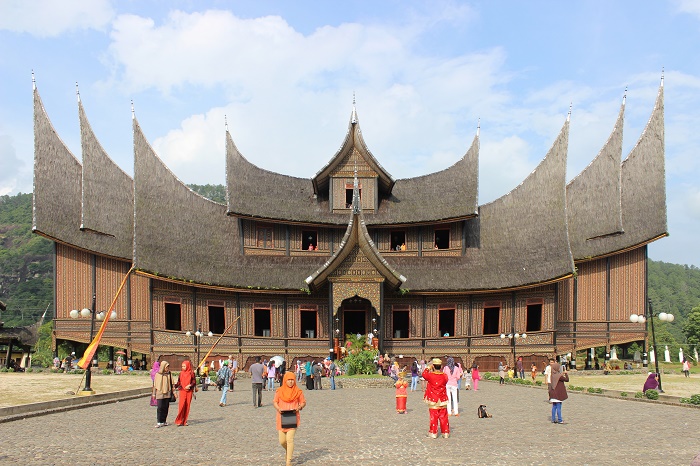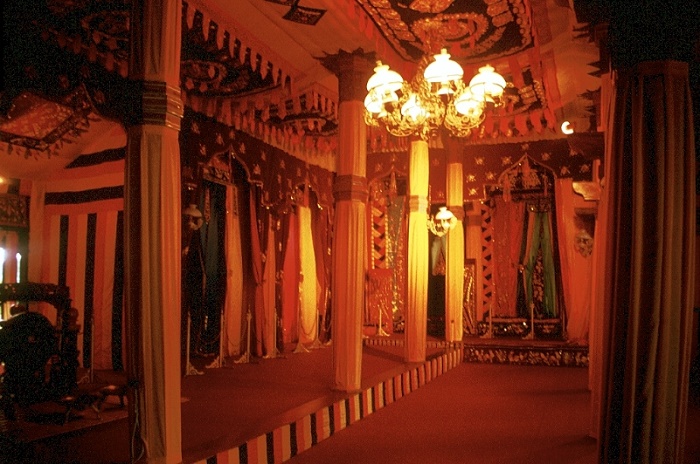Pagaruyung Palace is a royal palace, or also called istana of the former Pagaruyung Kingdom. The palace is located in Tanjung Emassub district near Batusangkar town, Tanah Datar Regency, West Sumatra, Indonesia.
It was built in the traditional Minangkabau rumah gadang vernacular architectural style, but had a number of atypical elements including three floors structure and larger dimension compares to common rumah gadang.
However, the original Pagaruyung Palace was standing on the peak of Pagaruyung’s Batu Patah hill. It was burnt to the ground during a bloody riot in 1804. After that, it was reconstructed and burned again several times in 1966 and in 2007. The recent Pagaruyung Palace is only the replica made for the second time. This replacement structure was constructed to the south from the original one.
The palace on the peak of the hill was the center of fourteenth century Pagarayung Kingdom. According to local myth, Pagaruyung Kingdom, also called Batu Patah Hill Kingdom, was the origin of all Minangkabau people. It was where Bundo Kanduang, one of its queens, once ruled the kingdom. She is considered as the founder of matriarchal system of Minangkabau society.
Although today there is no king or royal family resides in this palace, since the Pagaruyung Kingdom was disbanded in 1833, the palace still held in high esteem among Minangkabau people as the descendants of scattered Minang nobles (bangsawan) still seeks their root and link to the former royal house of Pagaruyung.
The original Pagaruyung palace was built entirely from timber masonry, however the current building frame was built using modern concrete structure. Nevertheless, the Istano Basa Pagaruyung was quite faithfully restored using traditional technique and materials adorned with 60 carvings that signify Minang philosophy and culture.
The palace has three floors with 72 pillars and the typical rumah gadang gonjong, with horn-like curved roof made from 26 tons of black ijuk aren palm fibers. The palace is also furnished with over 100 replicas of Minang antique furniture and artifacts, aiming the palace to be revived as Minangkabau cultural center as well as tourism attraction in West Sumatra.













